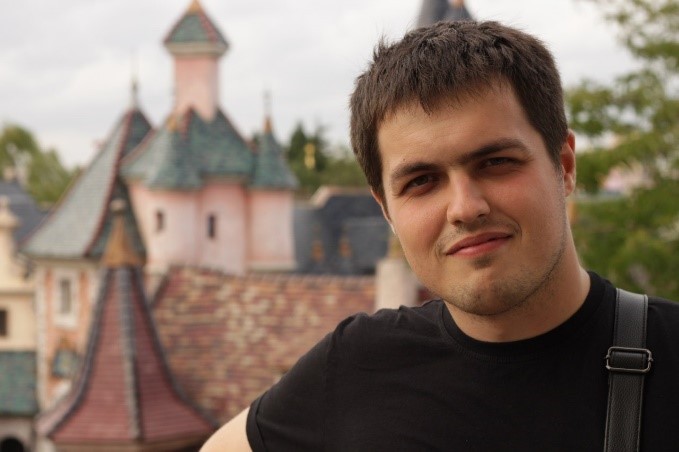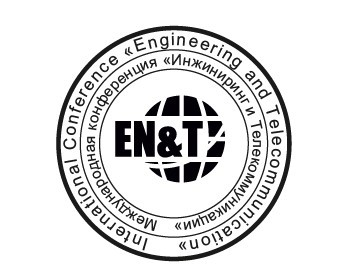Plenary Papers

Ruslan Smelyanskiy
On AI in computational infrastructure of the next generation
Biography:
Dr. Sc., Professor, a professor at the Faculty of Computer Science at the Moscow State University, Corresponding Member of the Russian Academy of Sciences. Research interests: architecture of multiprocessor computing systems, formal models of parallel computing, methods and tools for specification and verification of program behavior, modeling, analysis of functioning, synthesis and adaptation of multiprocessor computing systems, real-time systems. Author of more than 180 scientific papers, prepared 21 Ph.D candidates.
Abstract:
Currently the computing infrastructure is
moving from the “create it by yourself” concept to the “get as a service”
concept. The former one assume you don't need to buy and develop by your own
computing infrastructure, rent channels to connect to a public network, or hire
expensive specialists for system and network administration. In the new
paradigm, resources and services can be requested and received as you need. The
emergence of new technologies for virtualization of computing resources,
software-defined networks and virtualization of network functions have opened
up new opportunities for the development of data processing centers (DС). Now it's not so important how many servers and
racks are in DC. What is really important are the latency of request processing
and how efficiently we can map virtual resources to physical ones in DC. The
presentation considers the functional architecture of the NPC, the role and
place of multi-agent optimization methods in managing data flows and
distributing the computational load in the NPC, presents a list and statements
of the main tasks.

Evgeny Khorov
Providing low latencies and consistently high data rates in Wi-Fi 8 networks
Biography:
Ph.D.'12, D.Sc.'22, IEEE Senior Member, Head of the Wireless
Networks Laboratory of the Institute for Information Transmission Problems of
the Russian Academy of Sciences. Also, Evgeny is Associate Professor at MIPT, NRU
HSE and MSU. His main research interests are related to 5G/6G systems,
next-generation Wi-Fi, Wireless Internet of Things, and QoS-aware optimization. Evgeny has led dozens of academic and industrial projects. Being a voting member of
IEEE 802.11 and contributed to the Wi-Fi 6 standard. He has authored about 200
papers, which received several Best Paper Awards. Also, Evgeny was awarded national
and international prizes in science and technology. Evgeny gives tutorials
and participates in panels at large IEEE events. He chaired the TPC of various
IEEE and IETF conferences and workshops. In 2020, Evgeny was awarded as the Editor
of the Year of Ad Hoc Networks.
Abstract:
Many
emerging applications such as Virtual Reality, online gaming, and Factory
Automation require low latencies and consistently high data rates. This problem becomes a challenge in Wi-Fi
networks because of random access and interference. Nevertheless, the
developers of Wi-Fi 8 are going to solve it and provide the required quality of
service in the vast range of scenarios. In the talk, we will discuss possible
approaches for that and open issues.

Vladimir Kozlov, Vadim Kuriksha
Modern radio mobile communication systems in the UHF frequency range
Biography:
Kozlov Vladimir Nikolaevich was born on February 4, 1961 in Moscow. Graduated from the Moscow Electrotechnical Institute of Communications (MEIC), Faculty of Automation, Telemechanics, Electronics. He works at PJSC Radiophysics as the head of the research department, and also teaches (part-time) at the Department of Radiophysics and Technical Cybernetics at MIPT.
PhD
Area of interest: communication systems and networks, digital signal processing.
Kuriksha Vadim Alexandrovich was born on July 5, 1957 in Yaroslavl. Graduated from the Moscow Institute of Physics and Technology (MIPT), Faculty of Radio Engineering and Cybernetics. He works at PJSC Radiophysics as Deputy General Director – Chief Designer of the direction. Heads the work on the creation of systems and means of communication for civil and special purposes. Concurrently teaches at the Department of Radiophysics and Technical Cybernetics of MIPT.
PhD
Area of interests: radio communications, radio engineering systems.
Abstract:
The report contains an analytical overview of modern communication systems that provide voice transmission and high-speed digital information (photos, videos, file sharing, etc.) between mobile subscribers in the UHF frequency range.
The main attention is paid to the implementation of the following modern trends in the development of professional UHF radio equipment:
- the use of modern types of modulation and error-correcting coding in adaptive modes of operation;
- structure of UHF transceivers based on "software-defined radio" (SDR) technology;
- organization of decentralized self-organizing mesh radio networks, where each terminal simultaneously performs the functions of a transceiver, repeater and router;
- ensuring the required reliability of information exchange in a complex interference environment, including when exposed to electronic warfare.

Vishnevsky V. M., Vytovtov K. A., Barabanova E. A.
Autonomous navigation systems for tethered unmanned aerial vehicles
Biography:
Vytovtov Konstantin Anatolyevich, Doctor of Technical Sciences, Associate Professor, Leading Researcher at the IPU RAS. Graduated from the Dnepropetrovsk Higher Anti-Aircraft Missile Command School of Air Defense in 1988. In 2003 he defended his dissertation for the degree of candidate of physical and mathematical sciences in the specialty “Radiophysics”. In 2020, he defended his dissertation for the degree of Doctor of Technical Sciences in the specialty “Mathematical modeling, numerical methods, software packages.”
Abstract:
The development of unmanned aircraft has been progressing at a rapid pace in recent years. Today, the development of autonomous navigation systems in the absence of GPS and GLONAS signals is relevant. Among the most common methods of autonomous navigation are acoustic, optical, methods using machine vision, and magnetic.
Employees of the IPU RAS have proposed a hybrid system for local navigation of a tethered high-altitude platform, which includes a radar subsystem and a subsystem based on computer vision. The radar subsystem is designed for the 60 GHz range, providing stable tracking of a high-altitude platform and high noise immunity

Kovalenko D.L., Voruyeu A.V., Kulichenko V.N.
Techniques for Passive and Active WiFi Network Surveys
Biography:
Dmitry Kovalenko
Vice Rector for Research Educational institution "Francisk Skorina Gomel State University"
Candidate of Physical and Mathematical Sciences
Coordinator of the international projects Erasmus+ "Improvement of Master's level education in physical sciences at Belarusian universities" (acronym "PHYSICS") (2015-2018), Erasmus+ "Development of student-directed practice-oriented education in modeling cyber-physical systems" (acronym "CybPhys") (2019-2020). (acronym "Radium") (2020-2023), Erasmus+ "Training based on the best practices of EU countries in the field of radiation protection and nuclear safety culture for the Belarusian academic community" (acronym "Radium") (2020-2023).
Co-organizer of the International scientific conferences "Inter-Academia 2021", "Problems of interaction of radiation with matter", annual Republican scientific conference of students, undergraduates and postgraduates "Topical issues of physics and engineering".
Voruyeu Andrei
Head of the Department of Automated Information Processing Systems of Educational institution "Francisk Skorina Gomel State University"
Candidate of Technical Sciences
National expert of the competence Network and System Administration in the Republican professional skills competition WorldSkills Belarus 2018, WorldSkills Belarus 2020, ProfSkills Belarus 2023, WorldSkills Asia 2018, in Abu Dhabi (UAE), 45th International Championship WorldSkills Kazan 2019
Vladimir Kulinchenko
senior lecturer of the Department of Automated Information Processing Systems of Educational institution "Francisk Skorina Gomel State University"
Responsible executor of the scientific task "Digital and space technologies, security of man, society and state" subprogram "Digital technologies and space informatics" R&D "Diagnostics and multifactor security survey of WiFi wireless networks (IEEE 802.11 standard) of enterprises and organizations".
Abstract:
The wireless communications ecosystem includes a large number of participants, including end-users, device manufacturers, service providers, national regulators, and others. Stable operation of networked devices as part of complex hybrid devices and facilities allows to expand their functionality and automate the collection of data on experiments. The limitation of wireless technologies application is the reliability of the information communication channel. The materials consider approaches to the organization of passive and active survey of WiFi networks in conditions of intensive use of wireless environment.

Pozhar Vitold, Machikhin Alexander
Acousto-optical techniques and instruments for spectral analysis and imaging spectroscopy
Scientific Technological Center of Unique Instrumentation, Russian Academy of Sciences (STC UI RAS)
Biography:
Pozhar Vitold, Head of Department of Acousto-optical information systems, Professor at Moscow Bauman State Technical University,
Professor at National Research Nuclear University “MEPhI” (Moscow)
born in 1958, graduated from Moscow Institute of Physics and Technology (MIPT, Dolgoprudny, Moscow Region), Candidate of Science (PhD) since 1987, Doctor of Physics and Mathematics since 2005
Machikhin Alexander, Head of Acousto-optical spectroscopy Laboratory in STC UI RAS (Moscow), graduated from Moscow Bauman State Technical University (2007), Associated professor at National Research University “MPEI” (Moscow), Candidate of Science (PhD) since 2011, Doctor of Technology since 2019
Basic fields of activity: acousto-optics, optics, acoustics, radiophysics, spectrometry, optical gas analysis, environment monitoring, spectral imaging, differential spectroscopy, metrology.
Abstract:
Nowadays, instruments and technologies detecting and processing spatial-spectral data form the basis for various industrial, biomedical, agricultural and other specialized systems capable of solving many urgent problems. Among the different technical platforms implementing hyperspectral technologies, acousto-optical devices occupy a unique place due to the combination of exceptional features. The report presents a family of original (STC UI RAS) acousto-optical instruments and techniques for spectral and hyperspectral analysis as well as for spectral imaging. Some examples of their practical applications are discussed.

Özgür Gürbüz
Resource alloction for THZ drone communications with realistic antennas and mobility patterns
Biography:
Özgür Gürbüz received her B.S. and M.S degrees in Electrical and Electronics Engineering at Middle East Technical University, in 1992 and 1995, respectively. She received her Ph.D. degree in Electrical and Computer Engineering from Georgia Institute of Technology in 2000. From 2000 until 2002 she worked as a researcher and systems/algorithms engineer for Cisco Systems, in Wireless Access and Wireless Networking Business Units. As of September 2002, Dr. Gurbuz joined the Faculty of Engineering and Natural Sciences at Sabanci University, where she is now a Professor. Her research interests are in the field of wireless communications and networks, specifically design of link and higher layer network algorithms/protocols for emerging physical layer techniques including full-duplex communication, cooperative communication, MIMO, smart antennas. Recently, she has been working on full-duplex communication, digital self-interference cancellation and applications of machine learning in wireless communications/networks and THz communications. She is a member of IEEE and IEEE Communications Society.
Abstract:
This work considers Terahertz (THz) drone communications by applying various resource allocation schemes with practical THz antennas within the frequency range of 0.75-4.4 THz under realistic mobility and misalignment scenarios, ensuring a more accurate representation of real-world conditions. Through numerical simulations, we unveil the real capacity achievable within the realm of Tbps up to 100 meters range, when drones are in motion and subject to alignment and moderate misalignment. However, when exposed to actual mobility traces, the performance of all resource allocation schemes experiences a significant drop, sometimes up to six orders of magnitude, due to occasional reverse orientations of antennas. Consequently, the need arises for active beam control solutions to maintain the performance of THz drone networks. These findings highlight both the significant strides made in THz technology and the remaining challenges for the integration of THz band drones into the fabric of 6G networks.